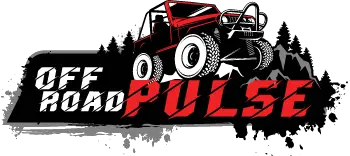The Yamaha Rhino 700, has become a favored UTV for off-road enthusiasts. Its reputation for power and versatility makes it a top choice for those seeking thrilling adventures. However, even the mighty Rhino can encounter issues on the trail.
In this comprehensive guide, we’ll dive deeper into common Yamaha Rhino 700 problems, and offer practical insights into symptoms, causes, and hands-on solutions to keep your off-road journeys hassle-free.
How to Diagnose and Solve Common Yamaha Rhino 700 Problems?
The Yamaha Rhino 700’s robust construction, potent engine, and adaptable features position it as the preferred option for individuals in pursuit of thrilling adventures on challenging terrains. Whether you’re exploring rocky trails, navigating muddy paths, or conquering sand dunes, the Rhino 700 has likely been your trusted companion. However, even the most dependable vehicles can face challenges along the way.
Read on for a detailed exploration of common Yamaha Rhino 700 problems and practical solutions that will keep your off-road journeys running smoothly. From fuel system concerns to transmission troubles, we’ll guide you through the symptoms, causes, and hands-on fixes for each issue.

Yamaha Rhino 700 Fuel Pump Problems
Yamaha Rhino 700 owners often encounter fuel pump problems that can disrupt their off-road adventures. These issues stem from issues within the vehicle’s fuel pump system, impacting the engine’s performance and overall operation. Symptoms of fuel pump problems are evident when riders face difficulties starting the vehicle, experience a noticeable loss of power during operation, and notice issues like engine stalling, misfires, surging, or hesitation.
In some cases, warning lights on the dashboard, such as the “Check Engine” light, may illuminate, signaling fuel system problems. The causes of these problems are diverse and can include wear and tear from prolonged use, fuel contamination with impurities, electrical issues like faulty relays or wiring, and problems with the fuel pressure regulator, which can disrupt the fuel delivery balance.
Solving Yamaha Rhino 700 Fuel Pump Problems
Addressing fuel pump problems in your Yamaha Rhino 700 is crucial to ensure uninterrupted off-road adventures. Here’s a detailed guide on how to diagnose and resolve these issues:
- Replace the Fuel Pump: When you encounter fuel pump problems, the most effective solution is to replace the faulty fuel pump with a high-quality replacement part recommended by Yamaha. This step ensures that your Rhino’s engine receives a consistent and adequate supply of fuel.
- Regular Fuel System Maintenance: To prevent future fuel pump issues, it’s essential to perform regular maintenance on your Rhino’s fuel system. This includes checking the fuel filter for clogs and replacing it as needed. Maintaining a clean and unobstructed fuel system helps ensure optimal fuel delivery.
- Inspect Electrical Components: Since electrical problems can contribute to fuel pump issues, inspect the relays, wiring, and connections related to the fuel pump. Ensure that all electrical components are in good condition, and replace any faulty parts as necessary.
- Fuel Quality and Fuel Pressure Regulator: To maintain your Rhino’s fuel system’s integrity, always use high-quality fuel with the recommended octane rating. Additionally, consider checking and, if necessary, replacing the fuel pressure regulator. A malfunctioning regulator can disrupt the fuel delivery balance.
By following these practical steps, you can effectively address fuel pump problems in your Yamaha Rhino 700, ensuring reliable engine performance during your off-road journeys.
Yamaha Rhino 700 Transmission Problems
Transmission problems in the Yamaha Rhino 700 can be a major source of frustration and inconvenience for owners, significantly impacting the vehicle’s performance and overall usability during off-road excursions. These issues are usually identifiable through common symptoms such as difficulty shifting gears, unresponsive and clunky gear changes, and the presence of unusual grinding noises during gear transitions. In severe cases, complete transmission failure may occur.
The root causes of these problems are often related to wear and tear resulting from constant use, affecting transmission components like gears, synchros, and bearings. Improper maintenance practices, such as neglecting routine tasks like changing transmission fluid or skipping inspections, can also exacerbate transmission issues.
Solving Yamaha Rhino 700 Transmission Problems
Transmission problems can be a significant source of frustration for Yamaha Rhino 700 owners. Here’s a detailed guide on how to diagnose and resolve transmission-related issues:
- Transmission Fluid Inspection and Replacement: Start by inspecting the transmission fluid levels and quality. Low or contaminated transmission fluid can lead to shifting difficulties and unusual noises. If you notice any issues, change the transmission fluid according to Yamaha’s recommendations.
- Proper Maintenance Practices: Ensure that you follow recommended maintenance practices outlined in your owner’s manual. Regularly inspect and maintain your Rhino’s transmission system. Neglecting routine tasks like changing the transmission fluid or skipping inspections can accelerate wear and deterioration, making problems more likely to occur.
- Transmission Troubleshooting: If you continue to experience transmission issues, consult your owner’s manual for specific troubleshooting steps. Yamaha provides valuable guidance on how to address common transmission problems. Follow these steps carefully to diagnose and rectify the issue.
By taking these practical measures, you can maintain the performance and reliability of your Yamaha Rhino 700’s transmission system, ensuring a smooth and trouble-free off-road experience.
Yamaha Rhino 700 Clutch Problems
Yamaha Rhino 700 clutch problems can be a significant roadblock to off-road adventures. Symptoms may include a slipping clutch, difficulty engaging gears, or an unusual burning smell. These issues often occur when the clutch components wear out over time or due to incorrect adjustments. Riders might notice that their Rhino doesn’t respond as expected when they try to shift gears, resulting in a less-than-smooth ride.
Solving Yamaha Rhino 700 Clutch Problems
When it comes to solving Yamaha Rhino 700 clutch problems, a systematic approach is key. Start by ensuring that the clutch is correctly adjusted according to Yamaha’s specifications. Proper adjustment ensures that the clutch engages and disengages smoothly, allowing you to shift gears without issues. Consult your owner’s manual for guidance on adjusting the clutch to the recommended settings.
If adjusting the clutch doesn’t resolve the problem, it’s time to inspect the clutch components. Focus on the clutch plates and springs, as these are common wear items. Look for signs of wear, warping, or damage. If you notice any of these issues, replace the worn-out parts with high-quality components recommended by Yamaha. It’s essential to use genuine parts to maintain the Rhino’s performance.
Regular maintenance is crucial to prevent clutch problems. Keep an eye on the clutch system during routine inspections, looking for any signs of wear or deterioration. Addressing clutch problems promptly and performing regular maintenance ensures that your Yamaha Rhino 700 operates smoothly, providing optimal performance during your off-road adventures.
Yamaha Rhino 700 Cooling System Problems
Cooling system problems can lead to engine overheating, which can significantly impact your Rhino’s performance and safety. Symptoms may include the engine becoming excessively hot during operation, reduced performance, or even engine damage. These issues often result from clogs in the radiator, malfunctioning cooling fans, or low coolant levels.
Solving Yamaha Rhino Cooling System Problems
Preventing cooling system problems in your Yamaha Rhino 700 is essential for a smooth and safe off-road experience. Here’s how to keep your cooling system in top shape:
- Regular Radiator Inspection: Periodically inspect the radiator for clogs or debris buildup. Use compressed air or a soft brush to remove any obstructions that may hinder airflow. A clean radiator efficiently dissipates heat, preventing overheating.
- Check Cooling Fan Operation: Verify that the cooling fans are functioning correctly. Turn on your Rhino and let it idle until it reaches operating temperature. The fans should engage to help cool the engine. If the fans don’t activate, inspect the fan motors and wiring for issues.
- Coolant Level Maintenance: Maintain the correct coolant level by regularly checking the coolant reservoir or radiator. If the level is low, top it up with the manufacturer-recommended coolant mixture. Ensure you use the correct type of coolant for your Rhino.
- Flush and Replace Coolant: Periodically flush the cooling system and replace the coolant following Yamaha’s recommended maintenance schedule. This helps prevent coolant contamination and ensures optimal temperature regulation.
By following these steps, you can prevent cooling system problems in your Yamaha Rhino 700, ensuring that your engine stays cool and performs at its best during challenging off-road adventures. Proper cooling system maintenance is essential for a trouble-free ride.
Yamaha Rhino 700 Electrical Issue
Electrical issues can disrupt your Rhino’s operation, leading to malfunctioning lights, unresponsive accessories, or even complete electrical system hiccups. These problems can occur due to loose connections, damaged wiring, or a drained battery. Owners may find that their Rhino’s lights flicker, accessories don’t function as expected, or the vehicle doesn’t start due to electrical problems.
Solving Rhino 700 Electrical Problems
Resolving electrical issues in your Yamaha Rhino 700 requires a methodical approach to identify and fix the root causes of the problem. Here are the steps to take:
- Battery Inspection: Begin by checking the battery’s charge level and connections. A weak or faulty battery can cause various electrical problems. If the battery is weak or has a poor connection, consider recharging it or replacing it with a new one.
- Wiring Harness Examination: Carefully examine the wiring harness for loose connections, frayed wires, or damage. Electrical problems are often caused by poor connections or damaged wiring. Repair or replace any damaged wiring and ensure all connections are secure.
- Accessories and Modifications: If you’ve added aftermarket accessories or made modifications to your Rhino’s electrical system, ensure that they are installed correctly. Improperly installed accessories can cause electrical issues. Verify the installation of each accessory, making sure it doesn’t interfere with the vehicle’s electrical system.
Following these steps systematically can help diagnose and resolve electrical issues in your Rhino, ensuring that all lights, accessories, and electrical systems operate smoothly, and you can enjoy trouble-free off-road adventures.
Conclusion
While the Yamaha Rhino 700 is renowned for its reliability, it’s essential to be aware of these common problems and their solutions. Regular maintenance and timely troubleshooting can ensure that your Rhino continues to deliver a smooth and exhilarating off-road experience.
By addressing these issues promptly, you can keep your Yamaha Rhino 700 running strong and ready for your next adventure, ensuring that your off-road journeys remain a source of excitement rather than frustration.




